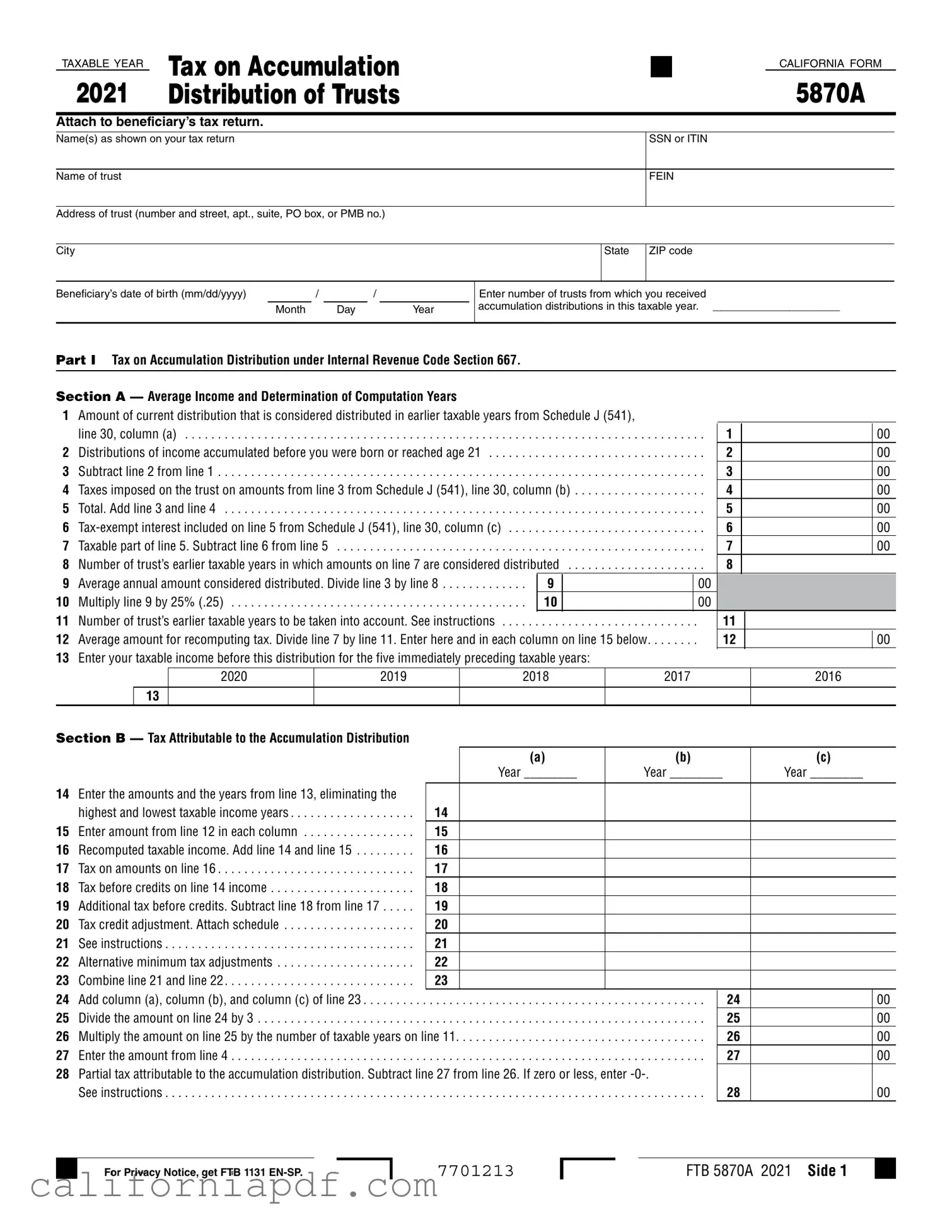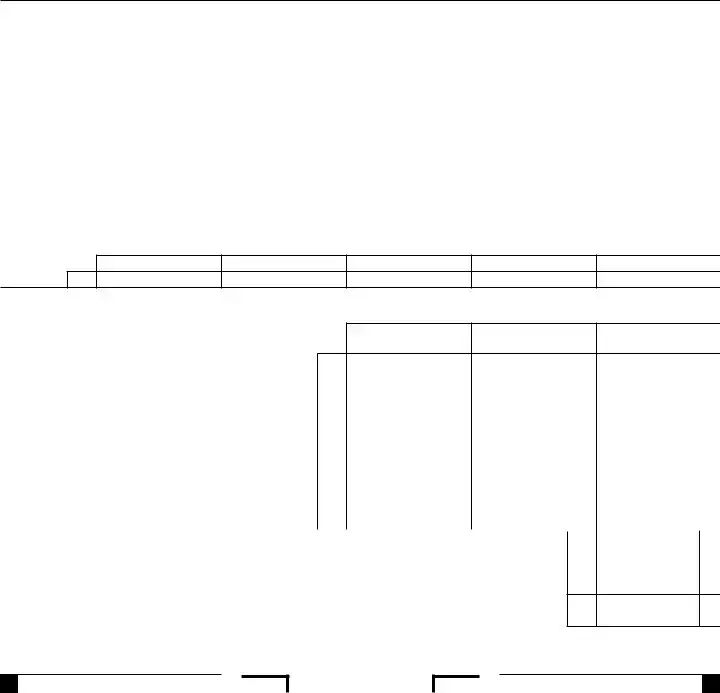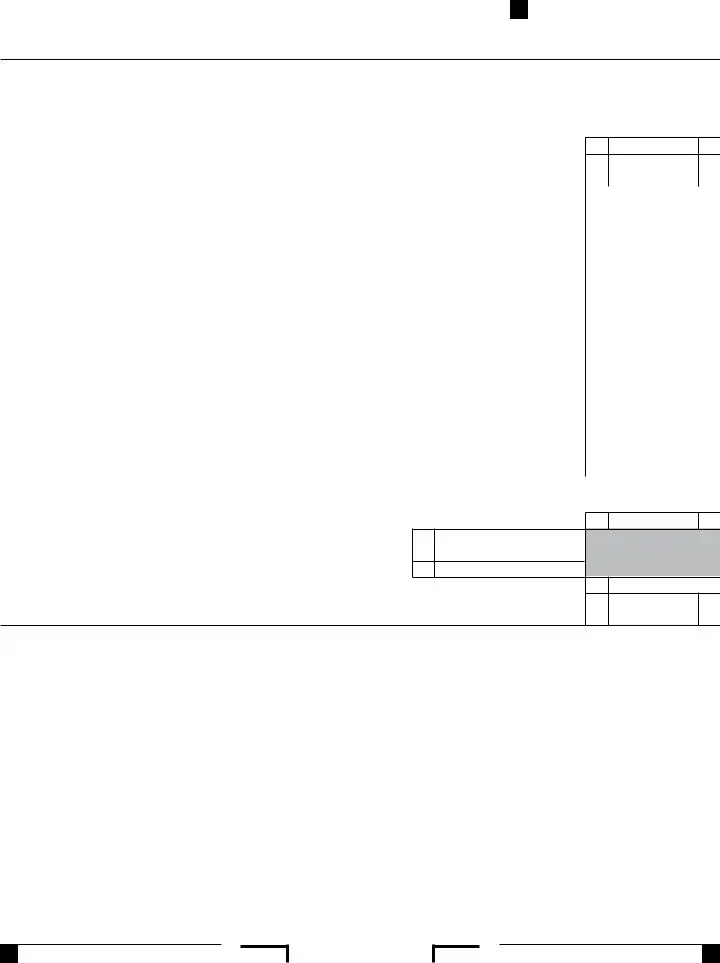The California 5870A form shares similarities with various other tax documents, particularly those involved in the reporting and taxation of trust income and distributions. One such document is the IRS Form 4970, "Tax on Accumulation Distribution of Trusts," which, like the California 5870A, deals with the tax implications of distribution from trusts to beneficiaries. Both forms calculate taxes on distributions that include income accumulated over multiple years, ensuring that beneficiaries pay the appropriate amount of tax on these delayed distributions.
Another related document is the Schedule J (Form 541), "Accumulation Distribution for Certain Complex Trusts," which directly supports the calculations required on the 5870A. Schedule J is used to detail the parts of a distribution considered accumulated income, crucial for determining the tax on accumulation distributions under Section 667 of the Internal Revenue Code. This direct linkage shows the interplay between state and federal guidelines for trust distribution taxation.
Form 1041, "U.S. Income Tax Return for Estates and Trusts," also shares characteristics with the 5870A, as it reports the income, deductions, and income distribution of trusts and estates. While the 5870A focuses on the tax from the beneficiary's perspective, Form 1041 is from the perspective of the trust or estate, indicating a complementary relationship between the forms.
The California Form 541, "California Fiduciary Income Tax Return," is the state counterpart to the federal Form 1041. It details the income and deductions associated with a trust or estate within California. The link between Form 541 and the 5870A is evident in the necessity of information from Form 541 (such as from Schedule J) to accurately complete the 5870A, showcasing their interconnected roles in trust taxation.
Form 540 and Form 540NR, "California Resident and Nonresident or Part-Year Resident Income Tax Returns," respectively, are needed for beneficiaries who file the 5870A, as the tax calculated on the 5870A must be reported as part of the individual's overall state income tax obligation. The connection underscores how trust distributions integrate into broader tax responsibilities.
Schedule CA (540), "California Adjustments – Residents," and its nonresident counterpart are used by individuals to adjust their federal income to California state income, which might include adjustments due to trust distributions reported on the 5870A. These forms bridge federal and state tax reporting, indicating the importance of harmonizing different aspects of tax obligations.
The IRS Form 3520, "Annual Return to Report Transactions with Foreign Trusts and Receipt of Certain Foreign Gifts," while primarily for foreign trusts, parallels the 5870A in its focus on trust transactions and beneficiary reporting. Both forms ensure compliance with reporting standards and correct taxation of trust distributions, whether domestic or foreign, highlighting the global scope of trust taxation.
Lastly, the IRS Form 709, "United States Gift (and Generation-Skipping Transfer) Tax Return," indirectly relates to the 5870A by covering another aspect of wealth transfer – gifts and generation-skipping transfers. Though focused on different types of transfers, both documents are key components in the landscape of trust and estate taxation, emphasizing the comprehensive approach to tax law regarding wealth transfer.



